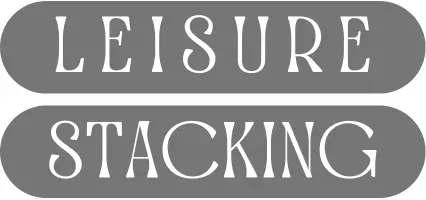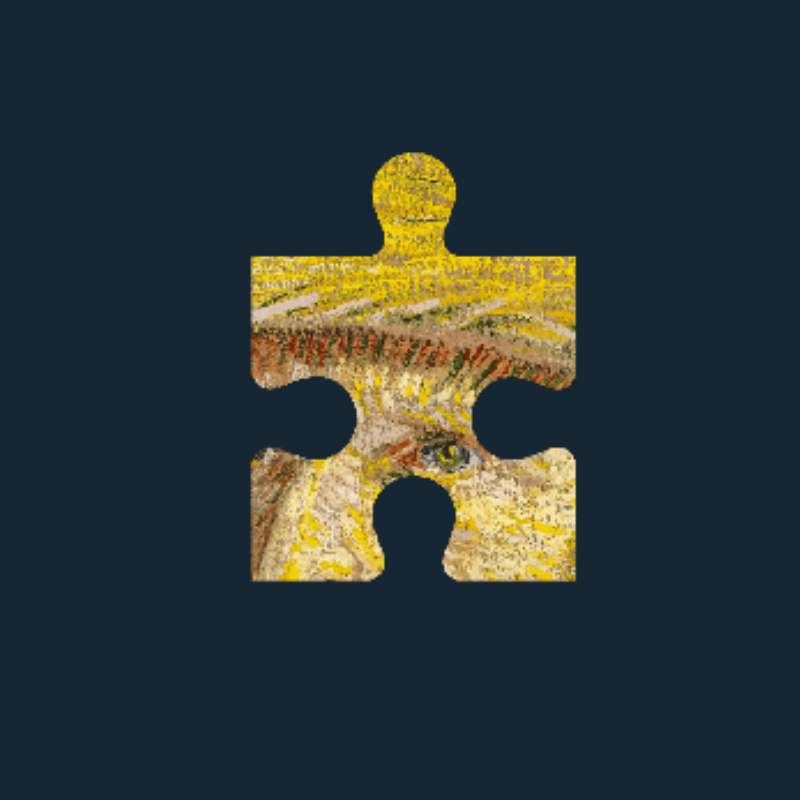Did you know that solving jigsaw puzzles can make you feel happy in the moment and help your brain work better over time?
Read on to get the tips and tricks you need to fall in love with jigsaw puzzling.

Why Jigsaw Puzzling?
Puzzling stimulates the release of dopamine every time a piece fits correctly. In addition, research shows that engaging in jigsaw puzzles over a long period can positively impact cognitive abilities such as attention, memory, problem-solving, decision-making, and visual perception, leading to improvements in overall mental function.
Patrick Fissler, a researcher in neurology, found that puzzles activate up to 8 different cognitive functions at the same time. He says, “It’s such a focused task that it can relax also your mind. It’s similar like meditation, like mindfulness training. In general, people say they feel really relaxed after jigsaw puzzling. And this relaxation is really important for psychological health.”
Fissler also says that it’s important to engage in many different leisure activities and not just one repeatedly. Thus, jigsaw puzzling is a great addition to a healthy leisure stack. Try adding more activities to your leisure stack with our planning suggestions, hobby ideas, and energizing activities.
Tips for Solving Any Jigsaw Puzzle
When starting a new jigsaw puzzle, you can quickly begin making matches and getting that dopamine flowing.
- Initial Setup: Find all your edge pieces while making sure every piece is in view.
- Group Pieces by Color or Pattern: As you work on fitting the edge pieces, start grouping the other pieces by color, pattern, or as somehow belonging to the same part of the puzzle.
- Finish the Edges Early: Pieces that form the edge of the puzzle are typically easier to identify because they have at least one flat side. By separating these out first, you can frame your puzzle, making it easier to work inwards.
- Group Pieces by Shape: For large areas that all look the same, sort pieces by their shape (e.g. two outs and two ins or three outs and one in) to make it easier to try compatible shapes together.
- Utilize the Knob-and-Hole System: Puzzle pieces typically connect through a knob-and-hole system. By focusing on the configuration of these connections, you can match pieces more accurately. For example, a piece with a large knob might fit into a piece with a correspondingly large hole, even if the color or pattern isn’t immediately distinguishable.
- Double-Check Connections: As you near completion, double-check that all pieces are correctly connected and there are no gaps or misaligned sections.
- Record Your Achievement: Once you’ve placed the final piece, take a moment to capture an image of the final puzzle and find satisfaction in a job well done.
But wait, will you be completing a digital puzzle or a physical puzzle? This choice can greatly influence your puzzling experience. Let’s delve into the optimal strategies for each approach.
Tips for Digital Jigsaw Puzzling
Embarking on digital jigsaw puzzling offers a unique set of considerations compared to the traditional tabletop experience. Here are some tips to enhance your digital puzzling:
- Puzzle on Larger Screens: A larger screen can significantly improve your puzzling experience. The hierarchy of device preferences generally ranks PCs as the most preferred, followed by tablets, and then phones, due to the larger display area allowing for better visibility of puzzle pieces and less strain on your eyes.
- Seek Out Ad-Free Experiences: Ads can be distracting, especially when you’re deep in concentration. Opting for an ad-free version, if available, can make your puzzling time more enjoyable and uninterrupted.
- Aim to Display All Puzzle Pieces in One View: Being able to see all your pieces at once, without the need to scroll, can make the puzzle assembly process smoother and more intuitive. It mirrors the physical experience of having all pieces laid out in front of you.
- Look for Adjustable Piece Counts: Flexibility in choosing the number of pieces allows you to tailor the difficulty level to your preference or mood. Look for apps that offer this feature, as it adds to the replay value of the puzzles.
- Embrace Bonus Features: Many digital puzzle platforms include engaging extras like daily challenges, leaderboards, and options for social sharing. These features not only add a competitive edge but also foster a sense of community among puzzlers.
By keeping these tips in mind, you can maximize your digital jigsaw puzzling experience, making it as rewarding and enjoyable as its physical counterpart.
Try “World of Art – Learn with Jigsaw Puzzles”

Here at Leisure Stacking, we’re playing “World of Art – Learn with Jigsaw Puzzles.”
It retails on Steam for $10.99 where it occasionally goes on sale. For this modest price you get:
- Over 1000 great paintings as digital jigsaw puzzles
- Ability to play on Windows, Mac, or Linux, plus Remote Play capabilities for phones and tablets
- No ads
- All pieces in one view
- Four options for piece count: 12, 48, 128, and 300
- 100 achievements to earn such as “complete 6 landscapes” and “reach playtime of 100 hours”
One user, Mad Dog Torx, who has the 100 hours playtime achievement, had this to say about the game:
“Highly recommended and incredible value for money!
I have played a lot of jigsaw games on Steam and this is my favourite. The pictures are classic works of art and the classical background music is wonderful.”
As far as digital puzzling goes, definitely give “World of Art – Learn with Jigsaw Puzzles” a try.
Tips for Physical Jigsaw Puzzling
Physical jigsaw puzzles offer an unmatched tactile experience and a deep sense of accomplishment upon completion. To enhance your puzzle-solving journey, here are some refined tips:
- Sift to Remove Cardboard Dust: Before diving into a new puzzle, sift through the pieces with a soil sifter to eliminate any cardboard dust. This cleanup step prevents the pieces from sticking together and ensures a smoother sorting and assembling process.
- Select the Right Surface: Choose a large, flat surface that not only fits the full puzzle but also provides additional space for sorting pieces. A well-lit environment is essential for distinguishing subtle color variations and minimizing eye strain.
- Utilize a Foam Core Board: Employ a large foam core board for a stable and moveable puzzling surface. Its lightweight nature and affordability make it a perfect option for puzzlers needing to shift their setup.
- Ensure Optimal Lighting: Proper lighting is crucial for a pleasant puzzling experience, aiding in color differentiation and reducing the strain on your eyes during extended puzzle sessions.
- Implement a Sorting System: Organize pieces by color, pattern, or edges using baking sheets or medium foam core boards. This system keeps your workspace neat and speeds up the puzzle assembly.
- Protect from Pets: If you have pets, especially cats, consider puzzling in an area they cannot access or cover your puzzle with a large foam core board when not in progress to protect it from curious paws.
- Prepare Storage Solutions: After completing your puzzle, have gallon size and quart size slider storage bags ready for storing your puzzle pieces. Place edge pieces in the quart bag and the remaining pieces in the gallon bag. Then, store these bags in the original cardboard box to keep everything organized and ready for the next assembly.
These tips are designed to enhance your experience with physical jigsaw puzzles, making every session more enjoyable and efficient. Whether you’re a seasoned puzzle enthusiast or new to the hobby, these strategies will help you navigate and appreciate the nuances of physical jigsaw puzzling.
Learn from Karen Puzzles on YouTube
For those looking to elevate their puzzling game, the Karen Puzzles channel on YouTube is a great resource. Hosted by Karen Kavett, a lifelong puzzle enthusiast, her channel has become a go-to since its launch in 2018 for anyone interested in jigsaw puzzles.
Dive into her expertise with these two videos:
Newly equipped with all the best puzzling tips, perhaps you’re ready to find your own puzzle to complete. Stay tuned as we look at the best puzzle brands.
Top Physical Puzzle Brands
Discovering the right jigsaw puzzle can transform an ordinary evening into a captivating experience. With a myriad of puzzle brands available, selecting one that aligns with your interests and challenge level is key. Here’s a roundup of some of the best physical puzzle brands that consistently deliver quality and enjoyment:
- Buffalo Games: Known for their vivid imagery and high-quality pieces, Buffalo Games offers a diverse range of puzzles, from photorealistic landscapes to pop culture references, catering to all ages.
- Ceaco: Ceaco stands out for its affordability without sacrificing quality. Their puzzles, ranging from whimsical to fine art, are perfect for casual puzzlers looking for variety.
- Cobble Hill: With its unique linen-textured pieces, Cobble Hill produces puzzles that not only challenge but also delight with their eclectic, artistic themes and nostalgic motifs.
- Eurographics: Specializing in educational and fine art puzzles, Eurographics is the go-to for those looking to engage both their mind and their appreciation for art.
- Gibsons: A UK-based brand, Gibsons is celebrated for its high-quality, sustainable materials and classic designs, offering a nostalgic charm through its extensive catalog of puzzles.
- Heye: Renowned for their humorous and detailed illustrations, Heye puzzles are a favorite among those who enjoy a challenge as much as a chuckle.
- Liberty Puzzles: Founded in 2005, Liberty Puzzles breathes new life into the tradition of wooden jigsaw puzzles, combining intricate craftsmanship with historical designs.
- MasterPieces: With a focus on American nostalgia, sports, and entertainment themes, MasterPieces puzzles appeal to enthusiasts looking to connect with familiar subjects.
- Piatnik: This Austrian brand is known for its fine art puzzles featuring works from renowned museums, making it a favorite among art enthusiasts.
- Pomegranate: Pomegranate excels in producing puzzles that feature artwork from renowned museums and artists, offering a premium puzzling experience that’s as educational as it is enjoyable.
- Ravensburger: Perhaps the most well-known in the puzzle community, Ravensburger is synonymous with quality. Their puzzles, known for precise interlocking pieces, range from whimsical to complex designs.
- Springbok: Praised for their eco-friendly practices and unique, irregular piece shapes, Springbok offers a wide range of vibrant, detailed puzzles that appeal to all skill levels.
- White Mountain Puzzles: Specializing in puzzles that depict American history and landscapes, White Mountain Puzzles offers large, easy-to-handle pieces, making them ideal for family gatherings.
Each of these brands brings something special to the table, from the educational content of Eurographics to the unparalleled quality of Ravensburger. Whether you’re a seasoned puzzle enthusiast or new to the hobby, exploring puzzles from these brands can lead to hours of engaging, brain-boosting fun.
Start Your Next Puzzle Today
Exploring both digital and physical puzzles offers unique joys and benefits, from the tactile satisfaction of fitting pieces together to the convenience of puzzling anytime, anywhere with digital platforms. Each format brings its own set of rewards, enhancing cognitive functions, providing stress relief, and delivering a sense of achievement.
What’s your next puzzle challenge, and how will these tips help you tackle it? Share your plans in the comments—we’d love to hear from you.

